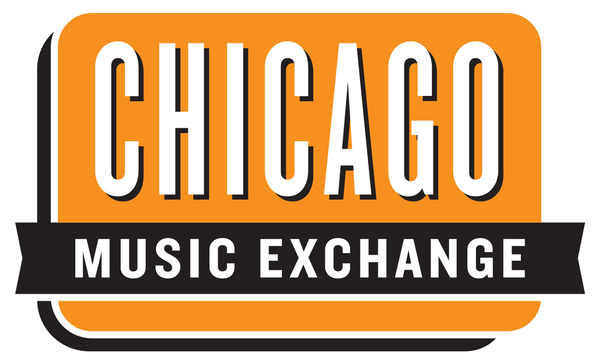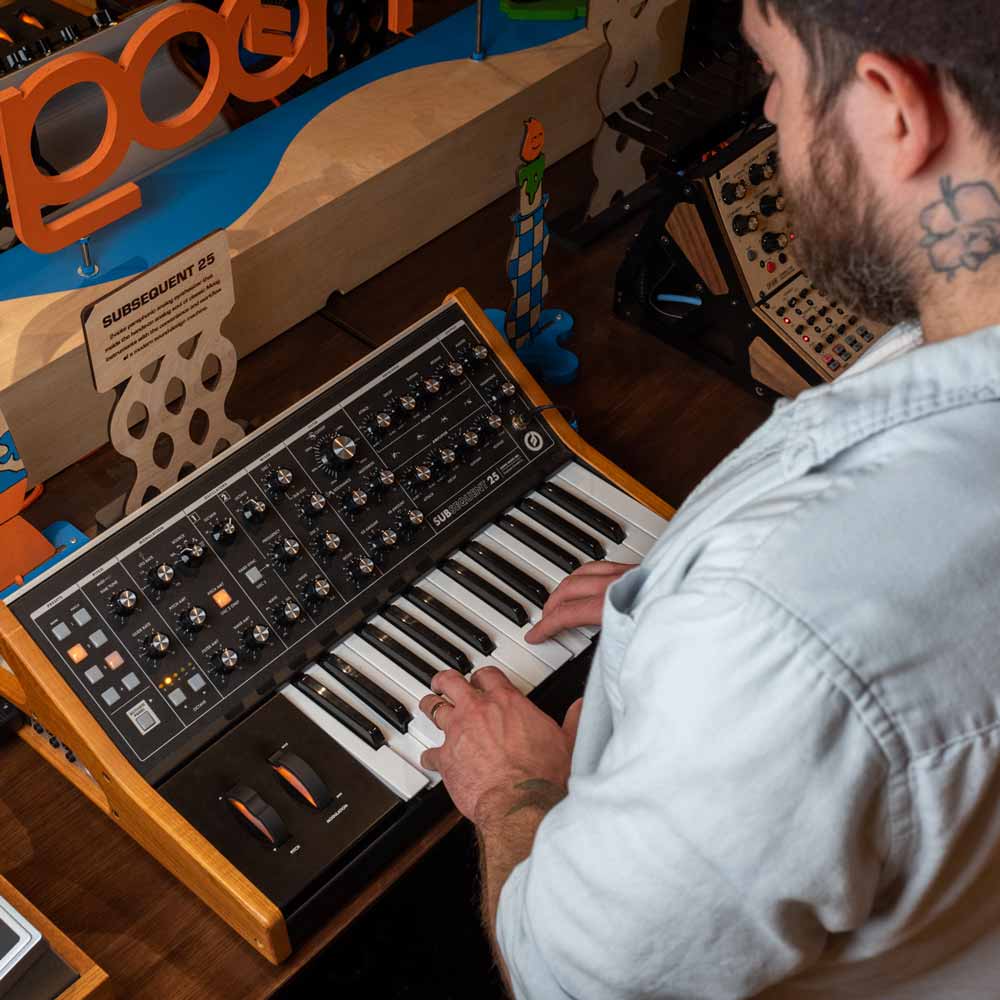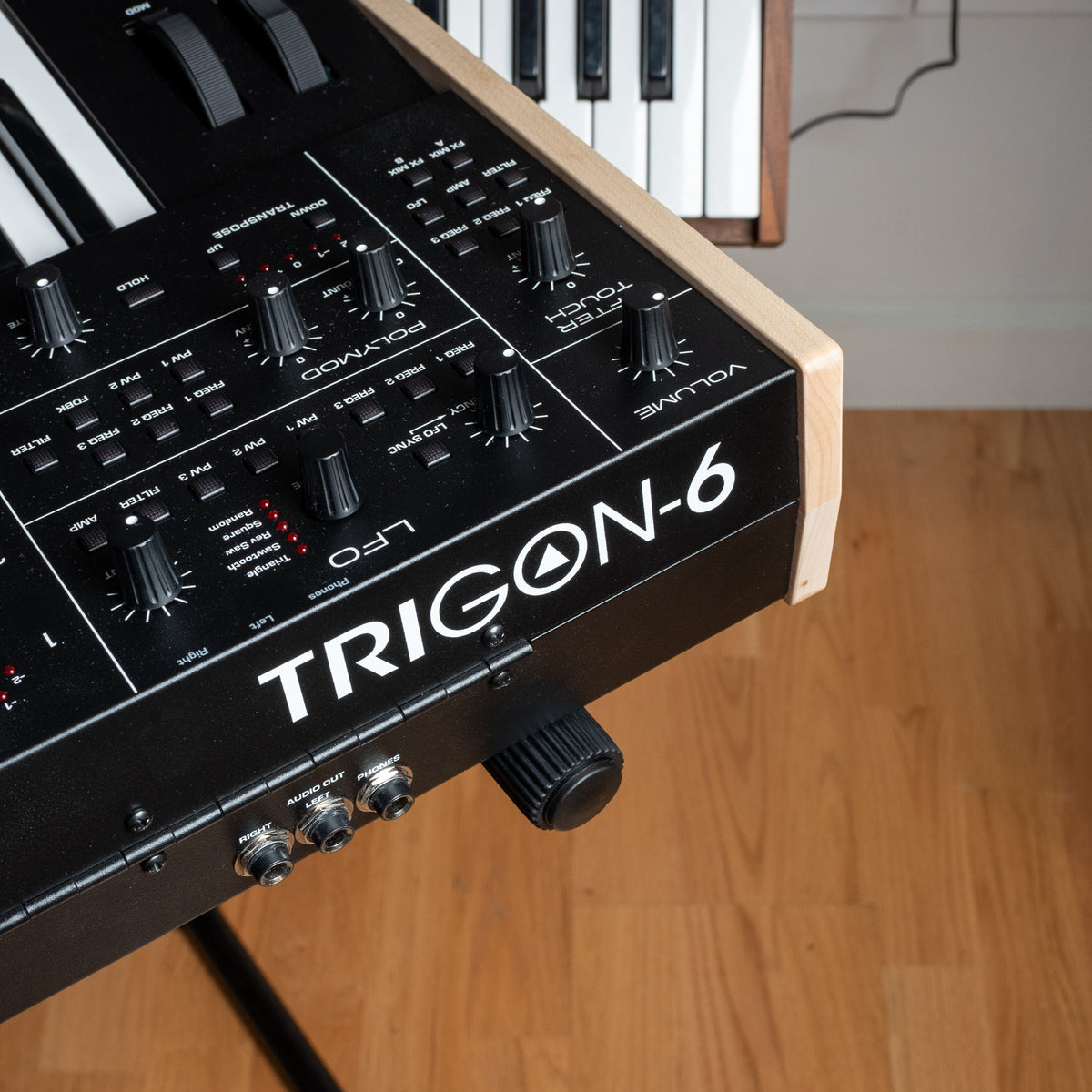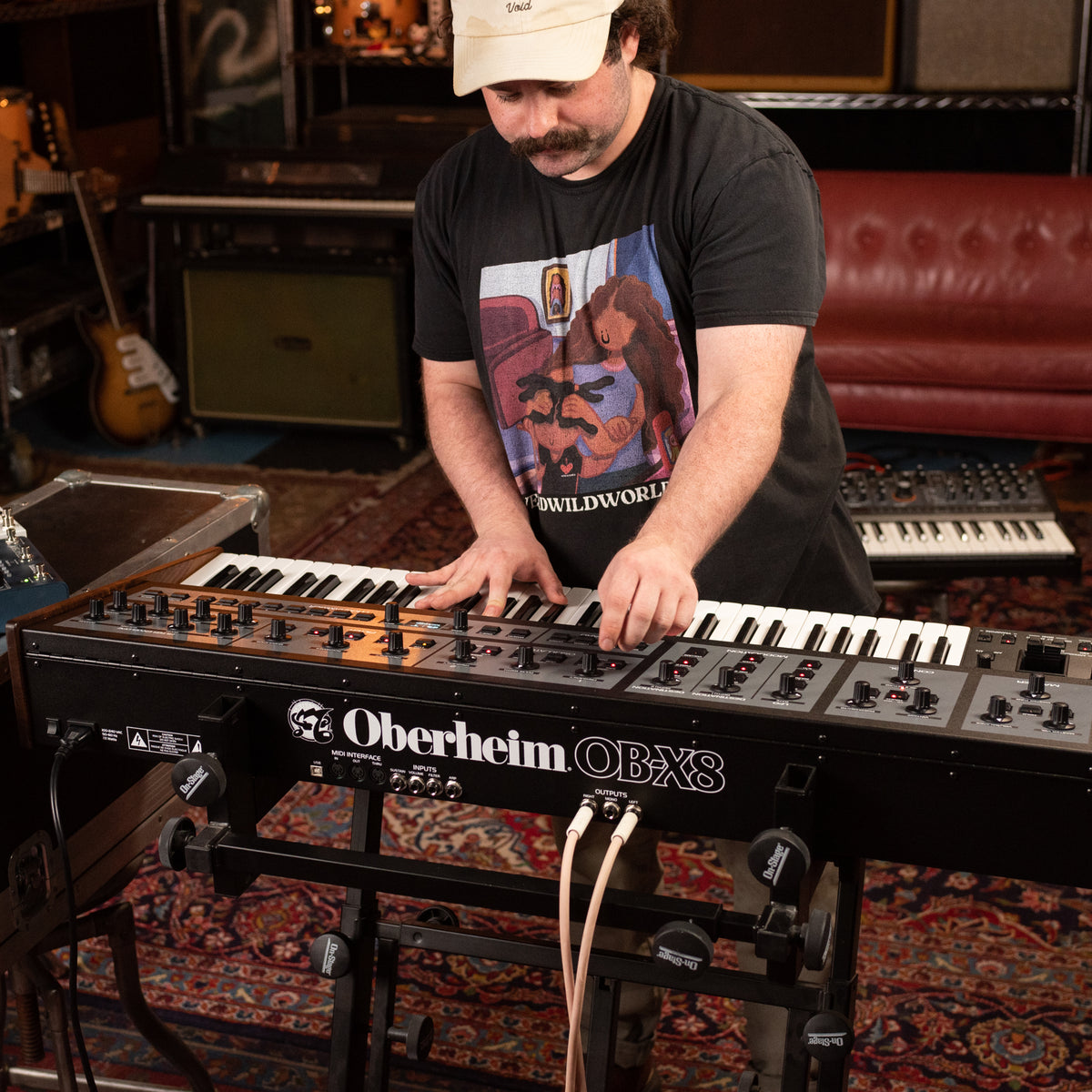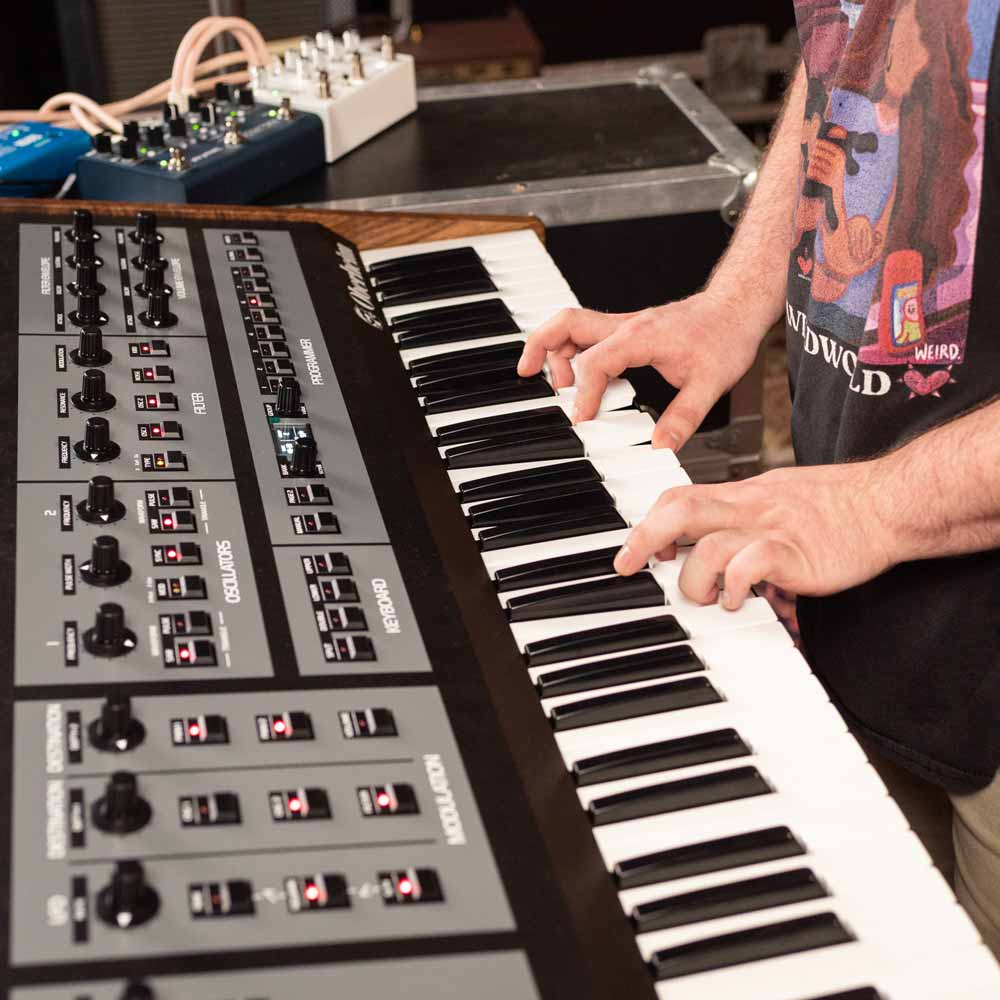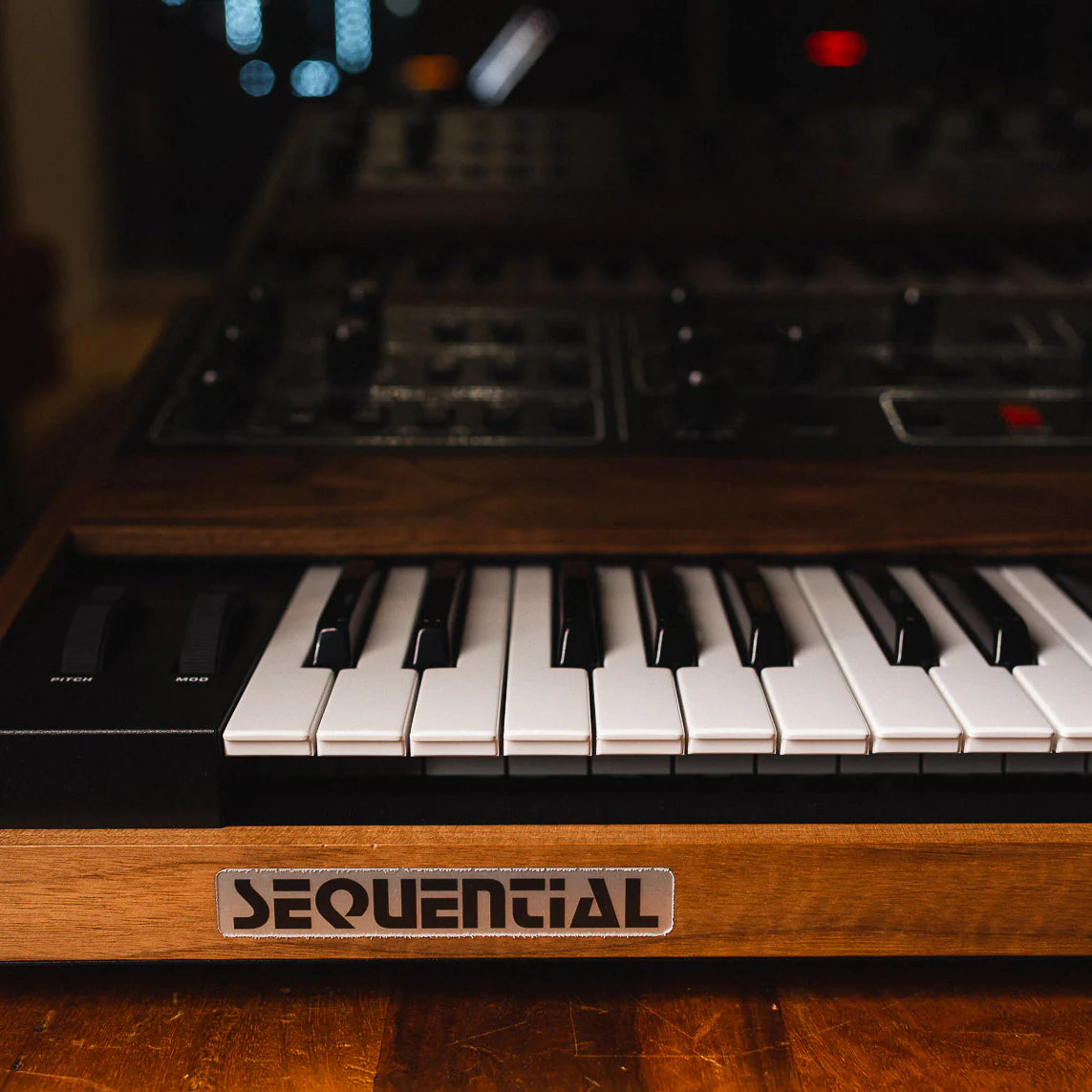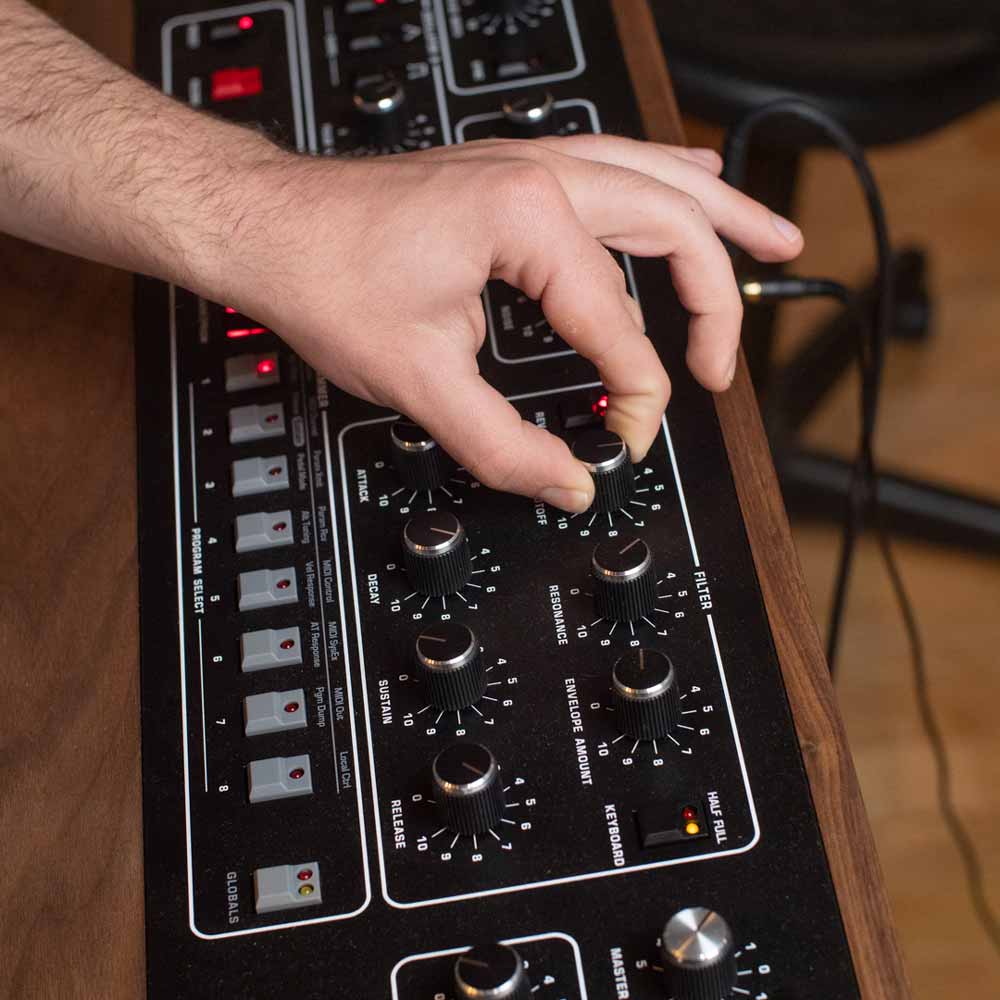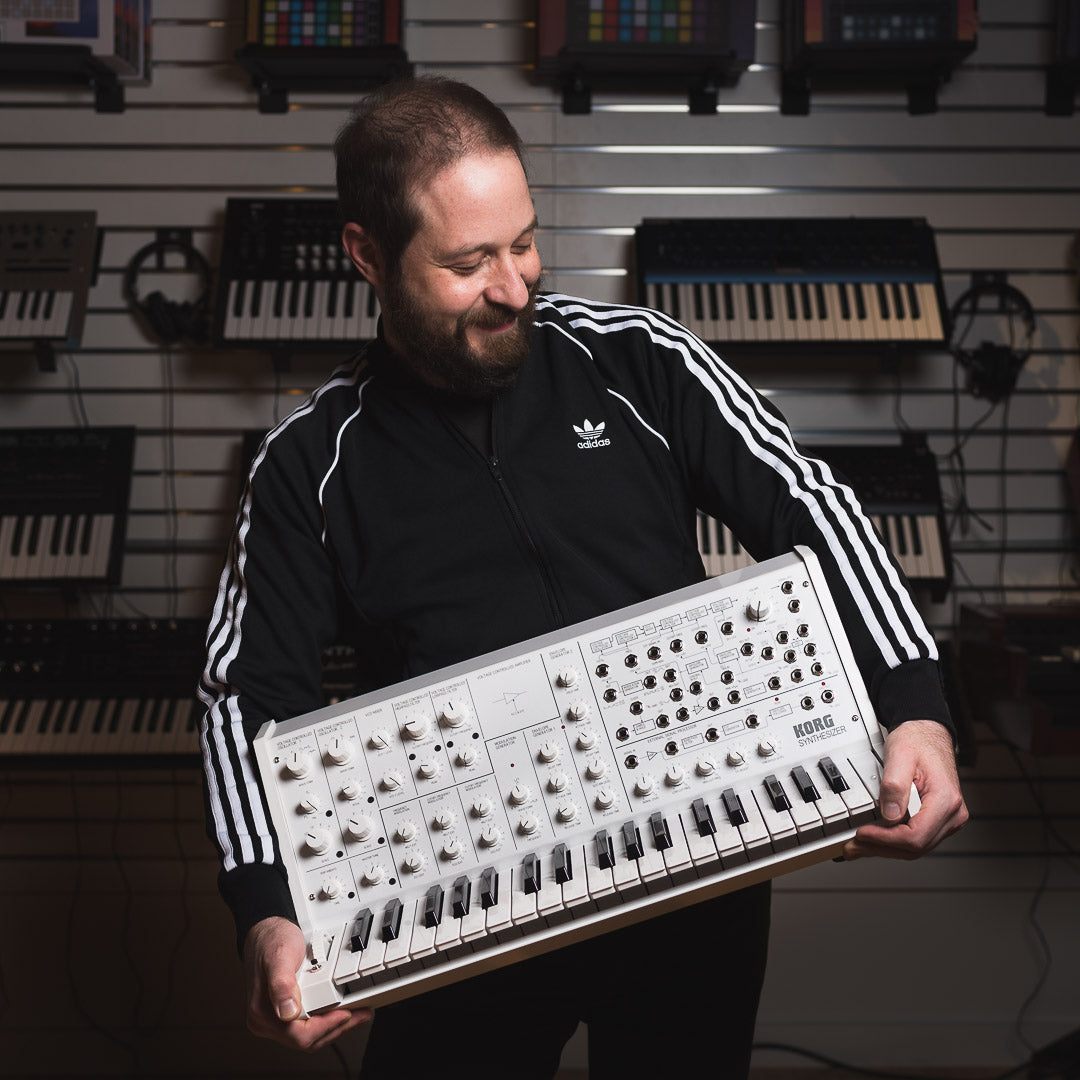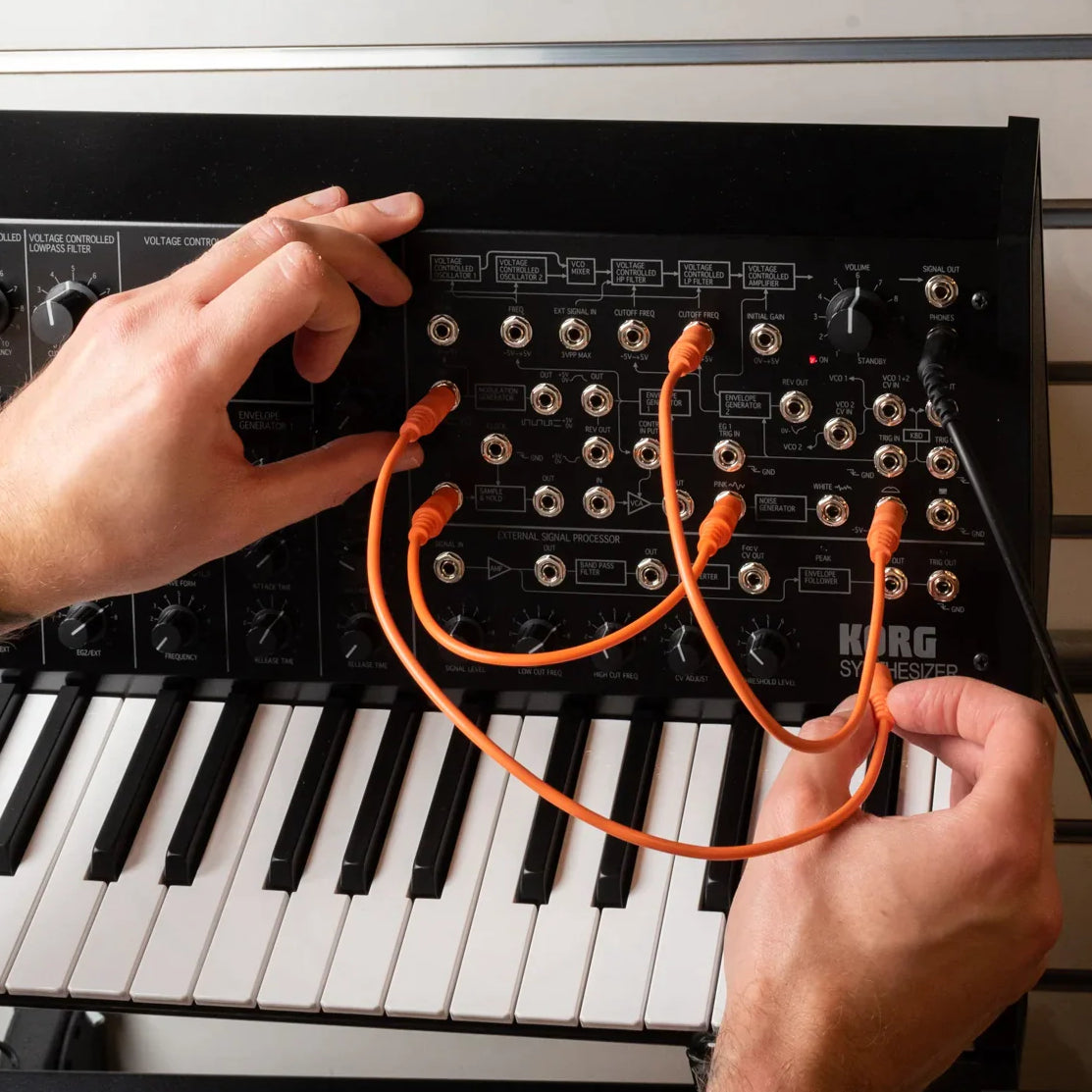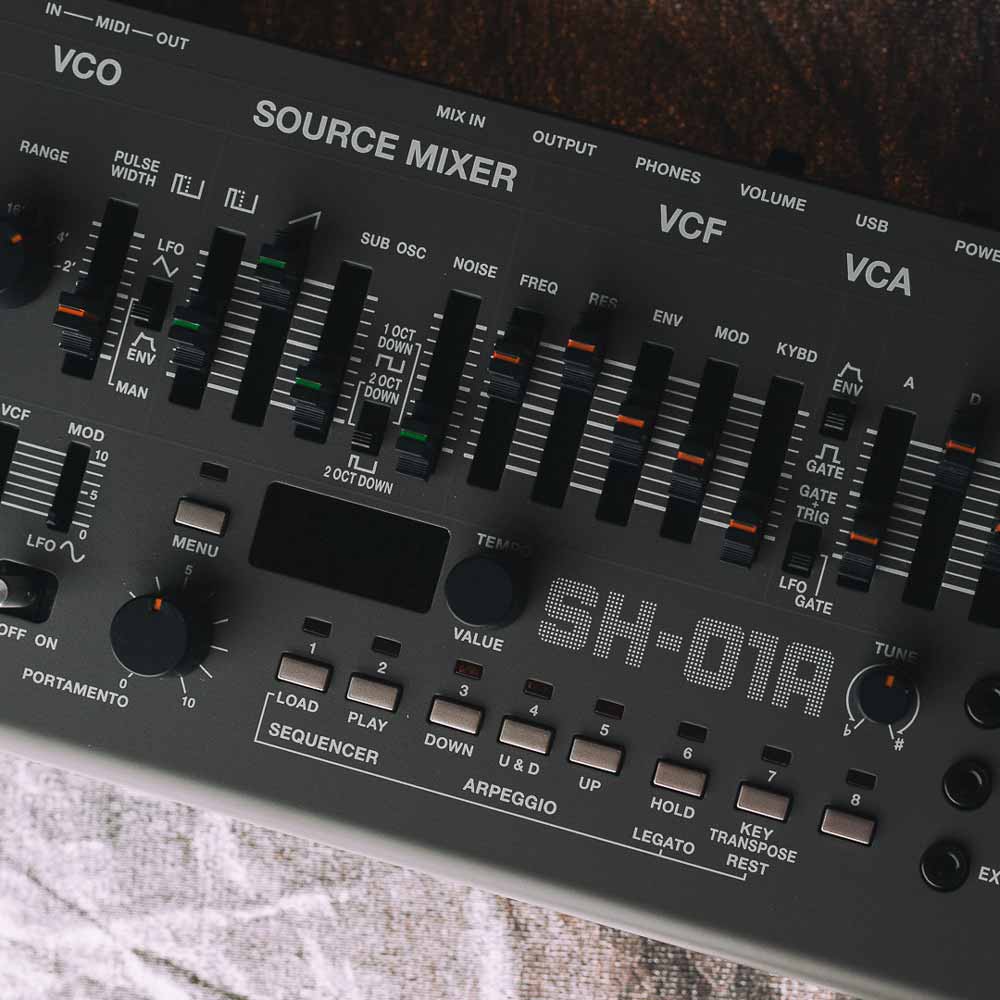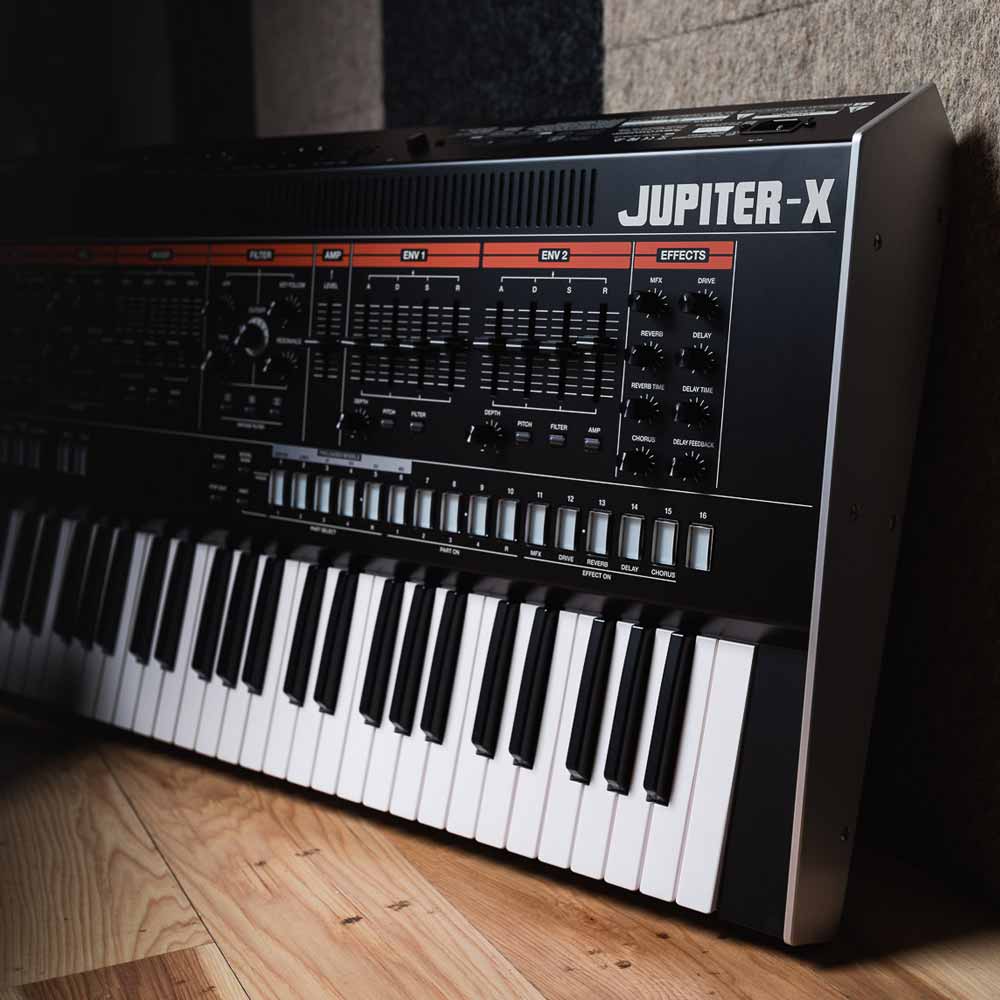Chicago Synth Exchange | Synth 101
A Musician’s Guide to the Fundamentals of Sound Synthesis with Electronic Musical Instruments
When you walk down the stairs of Chicago Music Exchange, past our collection of low-end instruments in the BASSment you’ll find a room full of musical gadgets that have proven so worthy of their own wall space that we devoted a whole corner of our ground floor to synthesizers—which CME has affectionately dubbed Chicago Synth Exchange.*Most—though, not all—of these musical gadgets, have a keyboard attached, making them appear piano-like.
But, while some of them are engineered to create sounds akin to a piano, most—indeed, virtually all—are capable of making so many more sounds than a piano ever could that they’ve been classified within a musical instrument category all its own since long before CME became unofficially known as “The World’s Greatest Guitar Shop.”
*The Synth Exchange’s product category offering includes, but is not limited to, “electric pianos” and “keyboards,” alike, as well as all varieties of electronic synthesizers. It’s worth noting that some synthesizers in no way evoke, or even remotely resemble, a piano—neither in appearance nor sound nor functionality—e.g., Eurorack modules, MIDI controllers, and drum machines.


The Making of an Electronic “Sound Event”
Chicago Music Exchange may have started as a shop geared primarily towards a guitar-playing clientele, but we’ve also long been a destination for the whole band—first, with CME’s BASSment; then with Chicago Drum Exchange; and, now, also with the latest addition with Chicago Synth Exchange.
In addition to crossovers between different types of instruments individual artists employ, there’s also a lot of switching among electronic musical instruments—whether with an electric guitar, or using an analog synthesizer—not only in how definitive they’ve become in shaping the sounds of popular music over the decades; but, also, in how they electronically generate a “sound event”** to create the audio we hear, using oscillating electric currents.
**In the nomenclature used by legendary electronic music and pioneer of West Coast Synthesis, George Buchla.

Guitar vs. Synth Sound Events
With any instrument, the musician fundamentally must generate a series of “sound events” —whether melodic, harmonic, or ambient—in order to make what we (hopefully) call “music.
When it comes to the idea of creating a “sound event,” for many—if not most—guitarists, the tactile nature of fretting and picking strings intuitively makes sense: a guitar player must physically, simultaneously, fret a note and pluck a string, which vibrates over the pickups, oscillating the transducer’s magnetic field and thereby generating an electronic current.
The tone of that frequency can then be shaped even further, based on sonic characteristics imparted from the guitar’s physical attributes and electronic components, as well as the guitarist’s own stylistic dynamics—not to mention any other modulation or effects within the guitar signal chain—or, just as importantly, the amp from which the sound eventually emanates!
That said, even guitar players who aren’t at all shy around a black-and-white keyboard may not understand the first thing about how analog components generate an electronic “sound event” in a synthesizer beyond pressing down on a key—a “sound event generator”—let alone, how to shape the volume, tone, and modulation parameters of that “electronic sound event,” which shape it into it an audible set of sounds, further inspiring their musical creativity.



Synth 101: Class in Session
Let’s get down to the basics of sound creation: How do you create a “sound event” with an analog electronic music synthesizer? The obvious answer is of course to power it up, plug it into an amp, and press down a key. But, without any mechanism that causes a hammer to strike a set of strings and resound throughout the body of the instrument—including the wood it’s constructed out of***—how does the physical application of a synth player’s touch electronically generate a sound? Well, we, at Chicago Synth Exchange, are here to help!
In our ongoing series of in-store “Synth 101” seminars, resident Synth expert Roland Chira covers everything from the basics of sound synthesis to the virtually endless variety of sounds and functionalities available from all synth products in the store—along with an audio demonstration, so you can hear each of the sounds you can create, yourself—we’re devoting a section of CME’s Soundboard Blog to provide an additional online resource and reference for all musicians, on the fundamentals of sound synthesis!
Related Posts
Taylor Guitars | Legacy Collection
Discover the Taylor Guitars Legacy Collection at Chicago Music Exchange—a celebration of 50 years of acoustic innovation. Featuring iconic models like the Legacy 810e, 514ce, and 714ce, the Legacy Collection blends classic craftsmanship with modern upgrades, ensuring superior sound, playability, and timeless design. Whether you're looking for Taylor’s signature Grand Auditorium shape or the bold projection of their Jumbo models, the Legacy Collection offers something for every guitarist. Visit us in-store or online to explore this tribute to Taylor’s acoustic excellence and elevate your music journey today!
Read moreFender | American Ultra II
The Fender American Ultra II series is built for players seeking the best in performance and innovation. By incorporating advanced, modern features into classic Fender designs, these guitars and basses push the boundaries of craftsmanship while maintaining the timeless appeal Fender is known for. With features like Ultra Noiseless pickups, a sleek Modern "D" neck profile, and Fender’s proprietary S-1 switching, the American Ultra II series delivers unmatched versatility, playability, and tone for musicians who demand the highest quality. Explore the Fender American Ultra II collection today and experience the next level of Fender excellence.
Read moreRoland & Boss Takeover In-Store Event | September 28, 2024
Get ready for the Roland & Boss Takeover in-store at Chicago Music Exchange! Join us on September 28, 2024, from 1-5 PM for an electrifying day of gear demos, expert tips, and epic giveaways. Don’t miss your chance to experience the Katana Gen 3 Series in action & more! RSVP now for automatic raffle entry. Must be present to win!
Read more